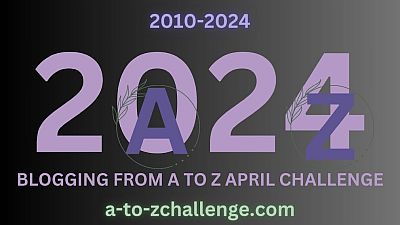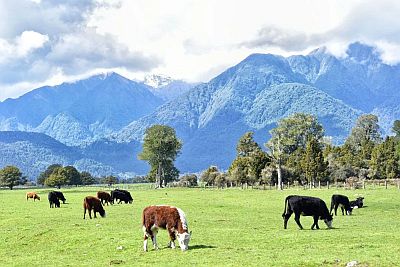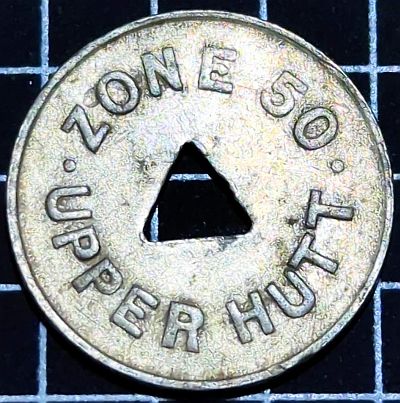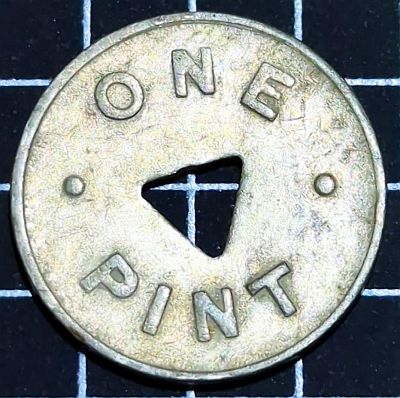A token for a pint of milk from a country which relies on dairies.
This is my entry for Day 14, “N” of the Blogging from A-Z April Challenge!
N = New Zealand.


(View of a farm from the NZ Pocket Guide website on seasonal work in New Zealand)
New Zealand is a nation founded on farming, and Dairy farming is a big part of that. New Zealand are one of the highest producers, and consumers of milk, per capita. 1.7 million hectares of New Zealand’s 26.8 million hectares is dairy farmland, and New Zealand are very proud of their milk.
Historically, milk was delivered to households in New Zealand cities and towns initially by horse and cart until trucks and vans were introduced. Cream cans were used to fill the household billy until the 1950s when glass bottles began to be used widely. Milk men and women would deliver bottles of milk and cream to householders who’d leave their empty bottles, with coins (and later, tokens) at the gate. Glass bottles were replaced by cartons and plastic bottles from the late 1980s. Up until 1986, supermarkets were not permitted to sell milk. Once this restriction was relaxed, household deliveries declined with the majority stopping during the mid-1990s. The article at the start of this paragraph goes into fascinating details about the process.
From the early 1900s small shops called ‘dairy produce sellers’ sold milk, cream, cheese, butter and eggs. They were the only shops allowed to sell these products and were also allowed to open on the weekend. These shops became known as “cash grocers” and then “dairy” from the late 1930s. Households could have a standing order for a weekly delivery of milk, groceries and meat, or phone through an order, or leave a list with the grocer. The children’s books and TV show, “Hairy Maclary from Donaldson’s Dairy” is based on the adventures of a dog who lives with the people who own such a “Dairy” shop.
Tokens were useful for milk deliveries for a number of reasons, not least of which being it discouraged theft of the money people had previously left with their empty milk bottles. Milk tokens were pre-purchased and left in the bottom of empty glass milk bottles at the gate or letterbox, to be exchanged for full bottles by the milkman.
Obverse

This token is from Upper Hutt, Zone 50. Upper Hutt is a town just north of Wellington, at the bottom of New Zealand’s North Island. The view at the top of the page shows a farm in this region. It looks very beautiful, and hilly!
I haven’t found information about the various zones (I have several tokens with different numbers). There is a book called “New Zealand milk tokens : North Island / Michael Carter” which I haven’t been able to get a copy of. If I ever do, and find out more, I’ll update the post! Or if you know, please do let me know.
Reverse

Different types of tokens could indicate different products, for instance milk, cream, and later even flavoured milk or juice. There were an amazing number of tokens issued around New Zealand. This collection of over 500 tokens sold in 2013 (for $160 USD – at just 32 cents US per token, that seems like a good deal).
The token is just offset from “Medal” alignment, as can be seen from the corners of the triangle hole. That is something I do enjoy about tokens, they often have small variations like that, which may not pass QA at a government mint, but are quite acceptable here.
While tokens are no longer used on New Zealand dairy farms, the industry itself is very strong. This website on seasonal work notes that:
- Over 95% of dairy products produced in New Zealand are shipped and marketed globally.
- New Zealand accounts for over a third of the world’s dairy supply, feeding over 100 million people annually.
- In 2014, New Zealand produced over 20.7 billion litres (5.4 billion gallons) of milk and had over 4.9 million milking cows.
- The average herd size is 419 milking cows.
- 71% of dairy herds are in the North Island, 24% located in the Waikato region (Further north on the north island than Upper Hutt).


Leave a Reply